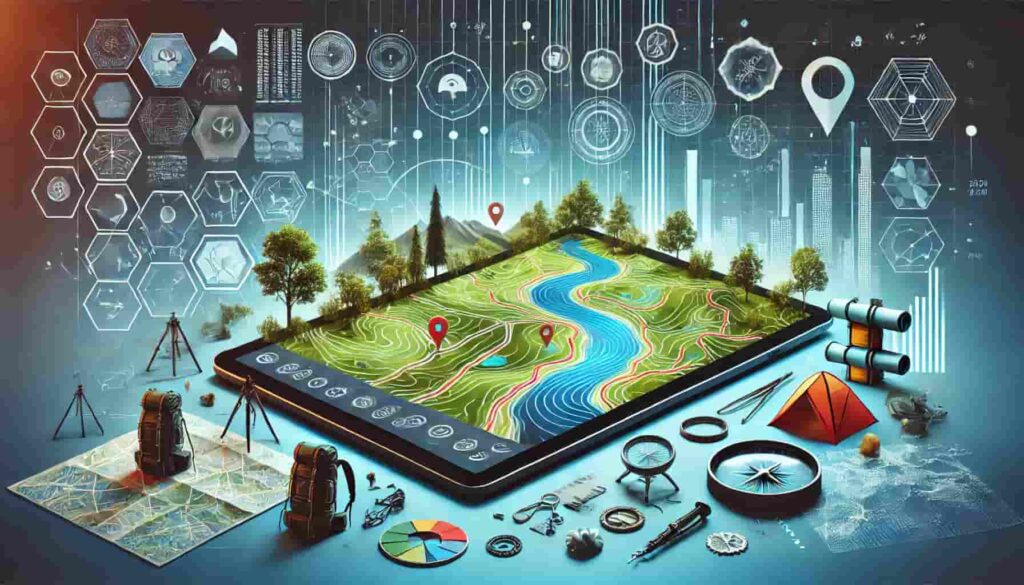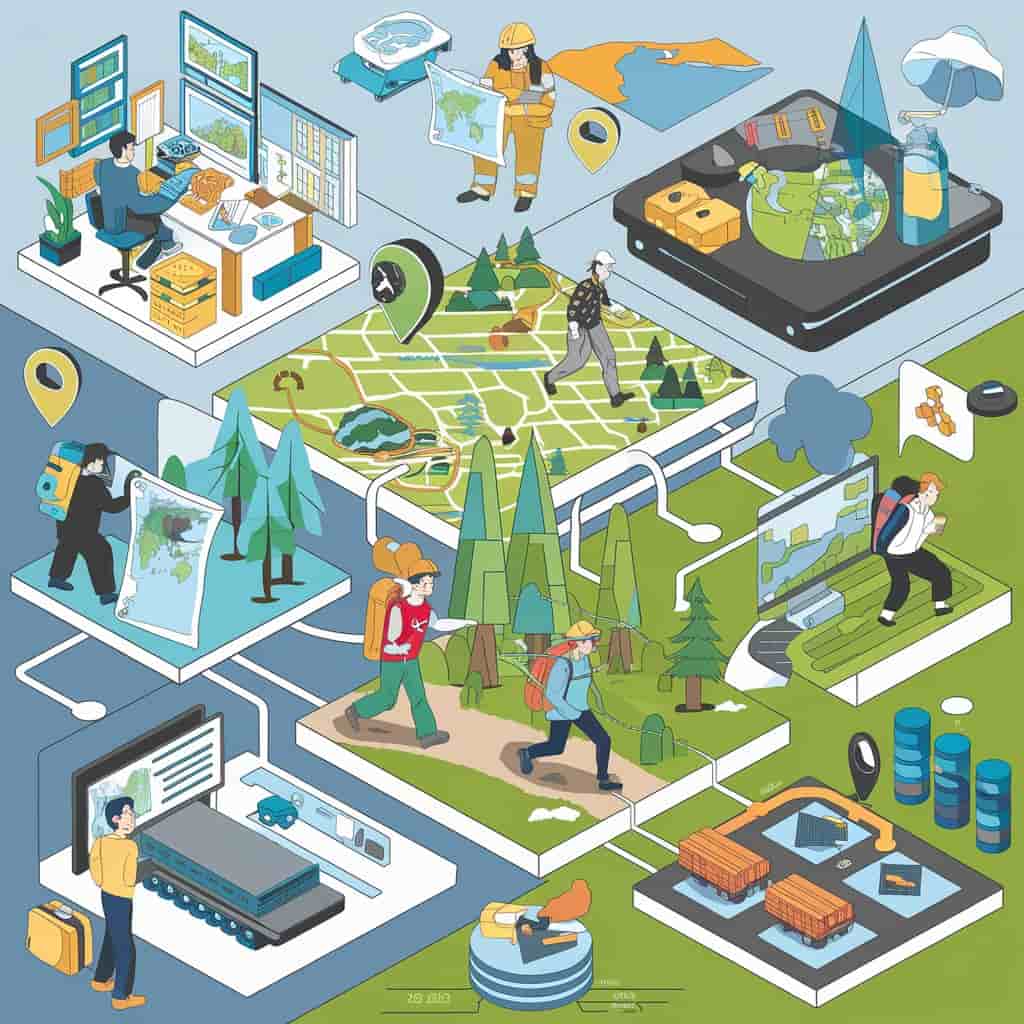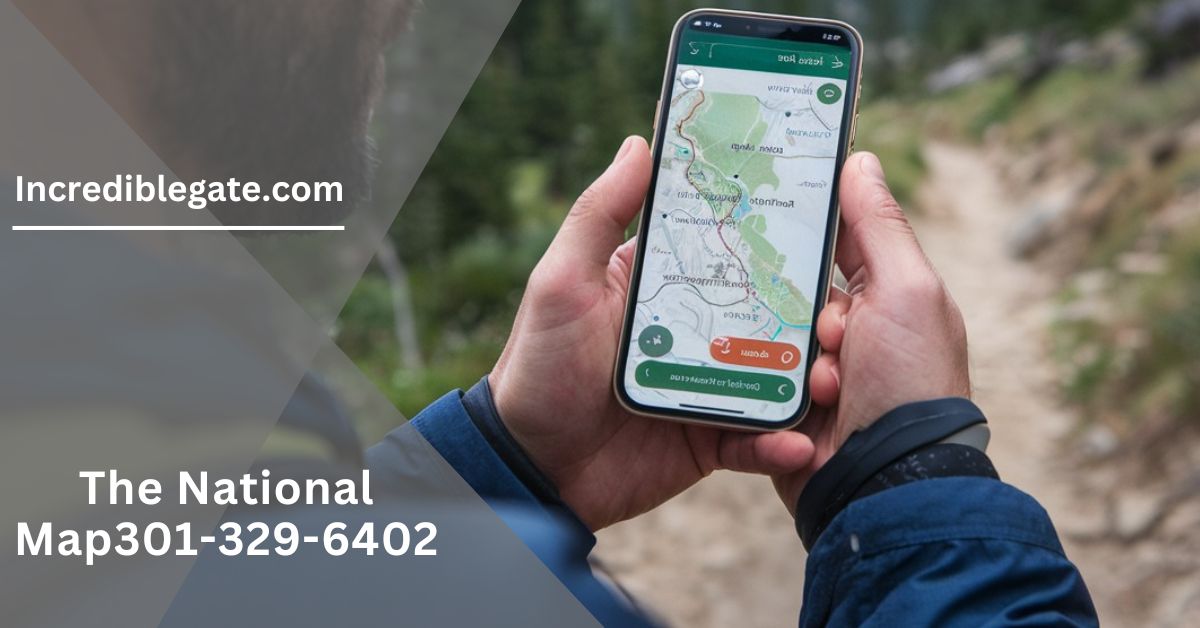Have you ever felt lost in a new city or tried to plan the perfect hike? Today, mapping technology has changed how we find our way and understand the world. One great tool for this is the National Map301-329-6402. It provides important information that helps with everything from city planning and environmental research to emergency response and travel.
This platform makes it easy to explore detailed maps, make smart decisions, and see how people and places are connected. Whether you’re a traveler or a professional looking for reliable data, this guide will give you all the info you need about the National Map301-329-6402, covering its history, key features, real-world uses, challenges, and what the future holds.
What Is The National Map301-329-6402? – Detailed Answer Here!
The National Map301-329-6402 is a dynamic online resource that provides accurate and up-to-date geographic data for the United States. Managed by the U.S. Geological Survey (USGS), it offers a range of data layers, such as topography, hydrology, transportation networks, and land use.
The platform is designed to meet the diverse needs of users, including urban planning professionals, environmental researchers, government agencies, and outdoor enthusiasts. Its interactive nature allows users to create custom maps, download datasets, and collaborate with others to share geographic insights.
The History And Evolution Of The National Map301-329-6402:
Early Beginnings Of American Cartography:
Mapping in America began with hand-drawn sketches by explorers and settlers. These maps often lacked precision but laid the groundwork for formal cartography. The development of more accurate maps became essential for land surveys, navigation, and territorial expansion during the 18th and 19th centuries.
The Impact of Aerial Photography:
The introduction of aerial photography in the mid-20th century marked a significant advancement in mapping. This technology enabled more accurate topographical mapping, revolutionizing geographic data collection. It laid the foundation for modern mapping practices, including developing Geographic Information Systems (GIS).
The Rise Of Digital Mapping And GIS Integration:
In 1997, the USGS launched an initiative to create a comprehensive digital mapping database, which eventually evolved into the National Map301-329-6402. The integration of GIS allowed for interactive, multi-layered maps that could be continuously updated. Today, the platform incorporates advanced technologies to ensure that it remains a crucial tool for decision-making and spatial analysis.

Key Features Of The National Map301-329-6402 – You Must Read!
Interactive Interface:
The National Map301-329-6402 features an intuitive interface that allows users to zoom in on specific areas, toggle between different data layers, and customize the visual representation of geographic information. This interactive functionality enhances user engagement and facilitates detailed spatial analysis.
Data Layers And Custom Mapping:
Users can access various data layers, including:
- Topography: Elevation and contour lines that depict the landscape’s shape.
- Hydrology: Rivers, lakes, and water bodies.
- Land Use: Information on urban, agricultural, and natural landscapes.
- Transportation: Roads, highways, railways, and other transport networks.
Custom mapping options allow users to highlight specific features, add personal notes, and create maps tailored to particular needs.
Collaboration And Data Sharing Tools:
The platform supports collaboration by allowing users to share maps, insights, and datasets with others. This is particularly beneficial for group projects, organizational research, and public dissemination of geographic information.
Downloadable Datasets:
The National Map301-329-6402 provides downloadable datasets for professionals and researchers, enabling detailed analysis and integration into other GIS software. These datasets can be invaluable for conducting in-depth studies, creating custom maps, and supporting various projects across multiple fields.
How Does The National Map301-329-6402 Benefit Various Sectors? – Need To Know!
- Government Agencies: Government organizations use the map for resource management, infrastructure planning, and disaster response strategies. It helps identify vulnerable areas, allocate resources effectively, and optimize public services.
- Businesses and Commercial Enterprises: Businesses leverage geographic data to analyze market trends, customer demographics, and competitor locations. This enables better strategic planning, site selection, and targeted marketing campaigns.
- Educational Institutions: Schools and universities integrate the National Map301-329-6402 into their curricula to teach geography, environmental science, and urban planning. It provides students with hands-on experience in data analysis and spatial problem-solving.
- Emergency Services: During natural disasters, emergency services use the platform to quickly access topographical and hydrological data, aiding in efficient response and recovery efforts.
- Environmental Conservation Efforts: Conservationists and researchers track changes in land use, forest cover, and water bodies over time. This information supports environmental impact assessments and the development of sustainable management plans.
Real-Life Applications Of The National Map301-329-6402:
Urban Planning And Development:
Urban planners use the map to visualize land use patterns and assess the potential impact of development projects. It supports zoning decisions, infrastructure improvements, and sustainable growth initiatives.
Disaster Management And Emergency Response:
The platform is invaluable in disaster management, providing data on flood zones, earthquake-prone areas, and other hazards. This information aids in preparing for, responding to, and mitigating the effects of natural disasters.
Environmental Research:
Researchers utilize the map for deforestation, climate change, and habitat loss studies. It allows them to track environmental changes and assess human impact on ecosystems. Using this tool, scientists can better understand how our actions affect the planet and find ways to protect it.

Tourism And Recreation:
Tourism organizations use the map to highlight scenic routes, historical sites, and recreational areas. Hikers, campers, and travelers benefit from accurately representing trails, parks, and natural landmarks. This helps outdoor enthusiasts discover new places while ensuring they have the most up-to-date information for safe and enjoyable adventures.
Transportation And Logistics:
Transportation companies rely on geographic data for route optimization, infrastructure planning, and supply chain management. The map helps identify the most efficient paths and plan future road expansions. With accurate data, businesses can save time and money, improve operations, and better serve their customers.
Challenges And Limitations Of The National Map301-329-6402 – Dont Miss Out!
- Data Accuracy and Consistency: While the National Map301-329-6402 strives to provide accurate data, some discrepancies can occur due to outdated information or inconsistent data collection standards across different regions.
- Technical Accessibility and Usability: The platform’s advanced tools may be challenging for individuals without technical skills, potentially limiting access for some users.
- Funding and Resource Constraints: Maintaining and updating the map requires significant financial resources. Budgetary limitations can affect the platform’s development and the frequency of data updates.
- Variability in Data Standards: Differences in data collection and processing methods across states can result in inconsistencies, making it challenging to compare geographic data uniformly.
- User Engagement and Feedback: The effectiveness of the National Map301-329-6402 also depends on user engagement. Limited feedback from users may hinder the identification of areas needing improvement, affecting the overall quality and relevance of the data provided.
How To Use The National Map301-329-6402 Effectively?
Using the National Map301-329-6402 is straightforward and can be helpful for various needs. First, visit the website where the map is hosted. Once there, you can explore the interactive features by zooming in and out of different areas. If you’re looking for specific information, use the search tool to find locations or features easily.
You can also click on different map layers to see details like topography, land use, or water bodies. Don’t forget to download datasets for more in-depth information for projects or research! Lastly, take advantage of any available tutorials or guides on the site to help you navigate the platform better. With a little practice, you’ll be able to find and use the information you need quickly and efficiently.
How Does The National Map Contribute To Both Public And Private Sector Initiatives?
Public Sector:
- Government Planning: Helps with urban development, infrastructure, and disaster response.
- Environmental Protection: Aids in tracking land use and wildlife conservation.
- Emergency Response: Provides critical data for disaster planning and recovery.
- Research and Education: Supports studies and teaching in geography and environmental science.
Private Sector:
- Business Decisions: Assists in choosing locations for stores and offices.
- Market Analysis: Helps target marketing efforts and understand customer demographics.
Logistics: Optimizes delivery routes and improves supply chain efficiency.
The National Map301-329-6402 Vs. Other Mapping Platforms? – Lets See!
Regarding mapping tools, the National Map301-329-6402 stands out for several reasons, especially compared to other popular platforms like Google Maps or ArcGIS.
Focus on Geographic Data:
The National Map301-329-6402 primarily emphasizes geographic data and resources. Unlike Google Maps, which is mainly for navigation and local business information, the National Map provides detailed data layers, such as topography, land use, and hydrology. This makes it a valuable resource for researchers, planners, and environmentalists.
Customizability:
While Google Maps allows users to create custom maps, the National Map301-329-6402 offers more extensive options for downloading datasets and integrating them into other Geographic Information System (GIS) software. This is particularly useful for professionals needing detailed analysis for projects.
Government-backed Data:
The National Map301-329-6402 is managed by the U.S. Geological Survey (USGS), ensuring the data is reliable and updated regularly. In contrast, some other mapping platforms rely on user-generated content, which can sometimes lead to inaccuracies.
User Experience:
While the National Map301-329-6402 has powerful tools, it can be more complex for casual users compared to the user-friendly interface of platforms like Google Maps. However, the depth of information available can be incredibly rewarding for those willing to learn.
Specialized Applications:
The National Map is particularly valuable for environmental research, urban planning, and disaster management, areas where other platforms may not offer as much detail. It provides tools specifically designed for professionals in these fields.

The Future Of The National Map301-329-6402:
The future of the National Map301-329-6402 looks promising as technology continues to evolve. One key growth area is improving data accuracy, which is crucial for users who rely on up-to-date information. The platform may also enhance its user-friendly features, making accessing and navigating the map easier for everyone, even those with limited tech skills.
Increased collaboration with local agencies could lead to more comprehensive data, accurately reflecting community changes. Additionally, integrating real-time data could help users track events like natural disasters or urban developments as they happen. Overall, these advancements will help ensure that the National Map301-329-6402 remains an essential resource for understanding our world.
Frequently Asked Questions:
What types of data can I find on the National Map301-329-6402?
The National Map301-329-6402 offers various data types, including elevation models, hydrologic features, and land cover information. Users can explore detailed layers that help visualize different aspects of the landscape. This extensive range of data is useful for environmental studies, urban planning, and more.
Can I download data from the National Map301-329-6402?
Yes, users can download datasets directly from the National Map301-329-6402. This feature is particularly useful for researchers and professionals who need to analyze data in GIS software. Downloadable datasets allow for deeper exploration and application of geographic information in various projects.
How often is the National Map301-329-6402 updated?
The frequency of updates to the National Map301-329-6402 can vary based on the type of data. Generally, the USGS strives to keep the information as current as possible. Users can check for update logs or announcements on the website to stay informed about new data releases.
Is there a mobile app for the National Map301-329-6402?
Currently, there isn’t a dedicated mobile app for the National Map301-329-6402. However, the website is mobile-friendly and can be accessed from smartphones and tablets. Users can still explore maps and data layers on the go, making it a versatile tool for outdoor activities or fieldwork.
What are some common uses for the National Map301-329-6402?
The National Map301-329-6402 is used for various applications, including urban planning, environmental monitoring, and disaster management. Researchers and scientists also use it to study land use changes, habitat loss, and climate change.
Can I contribute data or feedback to the National Map301-329-6402?
Yes, user feedback is valuable to the National Map301-329-6402 team. Through the website, users can report inaccuracies or suggest improvements. Engaging with the platform helps enhance data quality and user experience for everyone.
Conclusion:
The National Map301-329-6402 is a valuable tool that provides detailed geographic information for various uses, from research and planning to recreation. It connects people with reliable data, helping them make better decisions about the world around them.
While there are some challenges, ongoing improvements ensure it remains an important resource. Its wide range of applications makes it essential for both professionals and everyday users.
You Have To Read:

